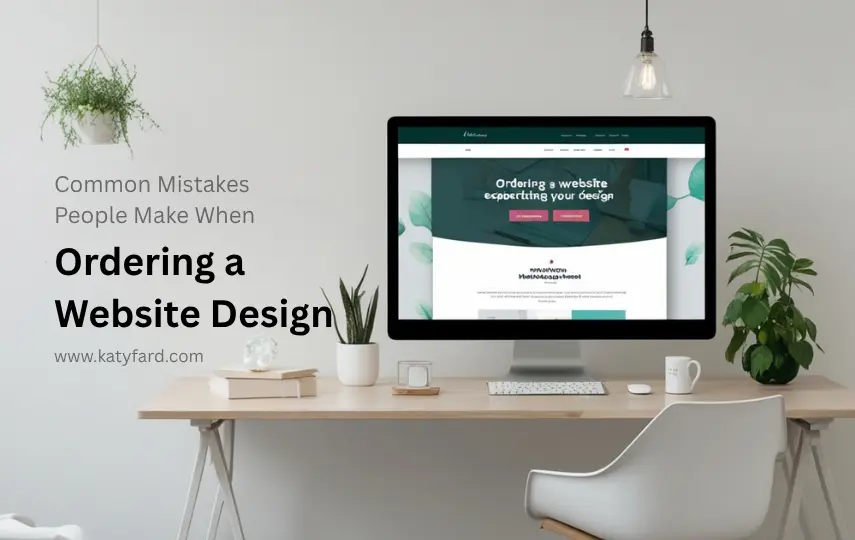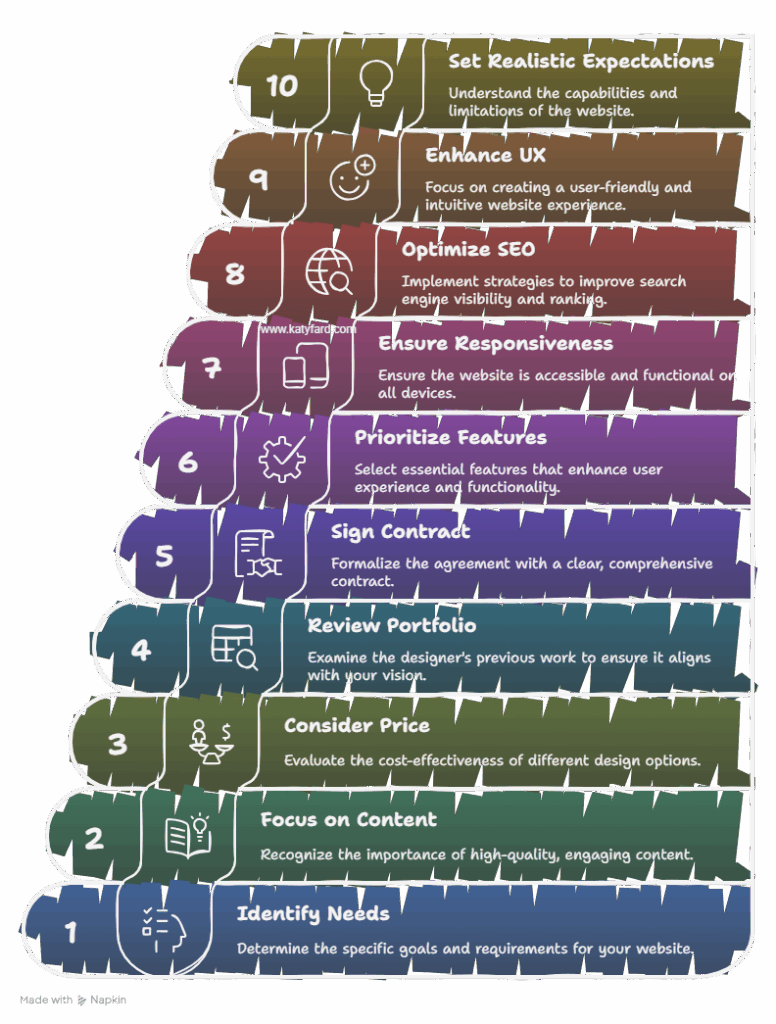If you’re planning to have a website designed for your business, portfolio, or online store, chances are you’re already searching for the best designer or agency. But amidst this excitement, it’s easy to make mistakes that can cost you time, money, and results. As a web designer who’s worked with dozens of clients, I’ve compiled a list of the most common mistakes clients make when ordering a website — and more importantly, how you can avoid them.
Mistake 1: Not Knowing What You Really Need
Many people approach web designers with only a vague idea: “I need a website.” But what kind of website? Is it an e-commerce site, a personal blog, a company profile, or a landing page? Not defining the purpose of your website can lead to a misaligned final product.
How to avoid it:
Start by asking yourself:
What is the main goal of my website?
Who is my target audience?
What actions do I want visitors to take?
Once these are clear, your designer can better translate your needs into features and functionality.
Mistake 2: Ignoring the Importance of Content
Design and content are two sides of the same coin. A beautiful design without strong content is like a stylish restaurant with no menu. Some clients delay content creation or expect designers to come up with it entirely.
How to avoid it:
Start preparing your website content (texts, photos, videos) early. If you’re unsure how to write copy, ask if your designer works with a content strategist or copywriter.
Mistake 3: Focusing Only on Price
Everyone wants a good deal, but choosing the cheapest designer might lead to a low-quality website that needs to be redone in a few months.
How to avoid it:
Consider value over price. Ask what’s included in the offer. Does it come with SEO basics, responsive design, training, or support? A higher upfront investment might save you money in the long run.
Mistake 4: Not Checking the Designer’s Portfolio
Would you hire a photographer without seeing their photos? Probably not. Yet many people skip reviewing a web designer’s past work.
How to avoid it:
Always check the designer’s portfolio to see if their style matches what you envision. Look for functionality, visual aesthetics, and performance on real websites.
Mistake 5: Skipping the Contract
A surprising number of people start working with freelancers without a written agreement. This can lead to confusion over deadlines, revisions, ownership rights, and more.
How to avoid it:
Always sign a contract that outlines scope, timeline, payment terms, number of revisions, and who owns the final product.
Mistake 6: Wanting Too Many Features Right Away
Some clients want everything in their first version: online shop, booking system, blog, membership area, and more. This can lead to delays, budget overruns, and a bloated, confusing site.
How to avoid it:
Start small and scale. Begin with the core features you need to launch, then grow your site in phases based on user feedback and business needs.
Mistake 7: Ignoring Mobile Responsiveness
More than 50% of internet traffic comes from smartphones, yet some clients only review the desktop version of their site.
How to avoid it:
Make sure your designer builds a responsive site that works seamlessly on phones, tablets, and desktops — and review all versions during testing.
Mistake 8: Not Prioritizing SEO
A site that’s hard to find is a site that’s not working. Many people ignore search engine optimization (SEO) until it’s too late.
How to avoid it:
Ask your designer to follow on-page SEO best practices. Include keyword-rich content, proper tags, image alt texts, and fast-loading design. For advanced SEO, consider working with a specialist.
Mistake 9: Not Thinking About the User Experience (UX)
Some clients want flashy animations or complex structures that confuse users. A confusing website leads to frustration and lost customers.
How to avoid it:
Always prioritize your visitor. Simplicity, clarity, and ease of use are key. Every click should have a clear purpose, and every page should lead users toward your goal.
Mistake 10: Expecting the Website to Do Everything
A website is a tool — not a miracle. Many people expect their site to instantly bring in traffic, leads, or sales without any marketing effort.
How to avoid it:
Plan for post-launch strategies: SEO, social media, email marketing, and perhaps even paid advertising. Your website should be the heart of your online presence, not the entire body.
Final Thoughts
Ordering a website design can be an exciting step for any business or personal brand. But with the wrong expectations or approach, it can turn into a frustrating experience. By avoiding the mistakes above and communicating clearly with your designer, you’ll set yourself up for a successful, stress-free project — and a website that actually helps your goals.
If you’re considering building or redesigning your website, feel free to reach out. I’d love to guide you through a smooth and strategic process.
Are you thinking about designing or redesigning your website?
📩 Contact me for a free consultation: @katywebdesign + Contact me page



How can I determine the right budget range for my website based on its type and features?
Hello Rafiq,
To estimate a reasonable budget, list your desired features. Research similar websites’ costs and ask designers for itemized quotes. Balancing your goals with available funds helps avoid underpaying or overpaying for the wrong level of service.
Thank you
Katy Fard
How involved should I be during the design process to make sure the final website meets my goals?
Hello Leona,
Stay involved by reviewing early drafts, giving clear feedback, and joining key planning sessions. Provide content on time and ask questions when unsure. Your input shapes the outcome, and regular communication ensures the website reflects your brand, goals, and audience needs accurately.
Thank you
How can I convince a visually-driven client to prioritize UX without sounding like I’m dismissing their creative ideas?
Hello Lina,
I highlight how good UX actually enhances their design by making it usable and effective. I show examples where beautiful sites failed due to poor usability, and explain that our goal is to make users love both the look and experience.
Thank you